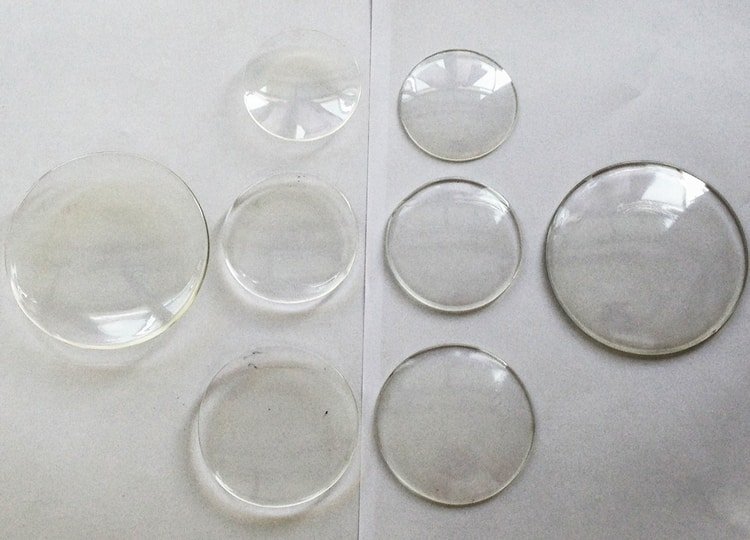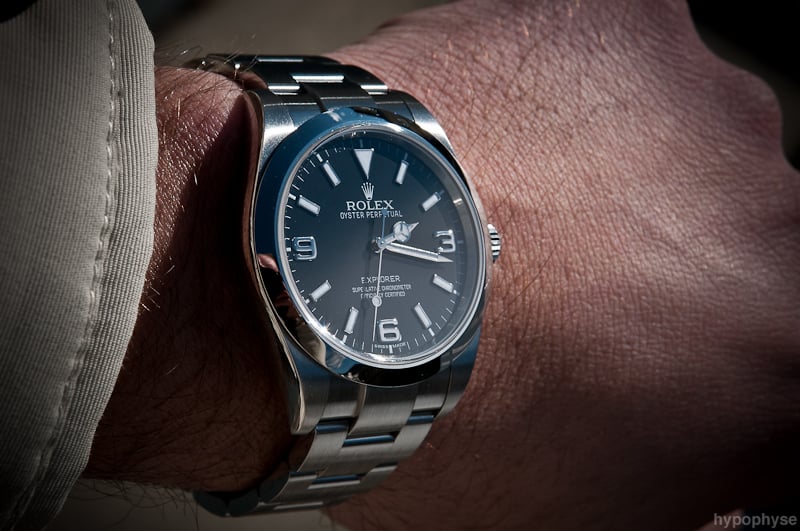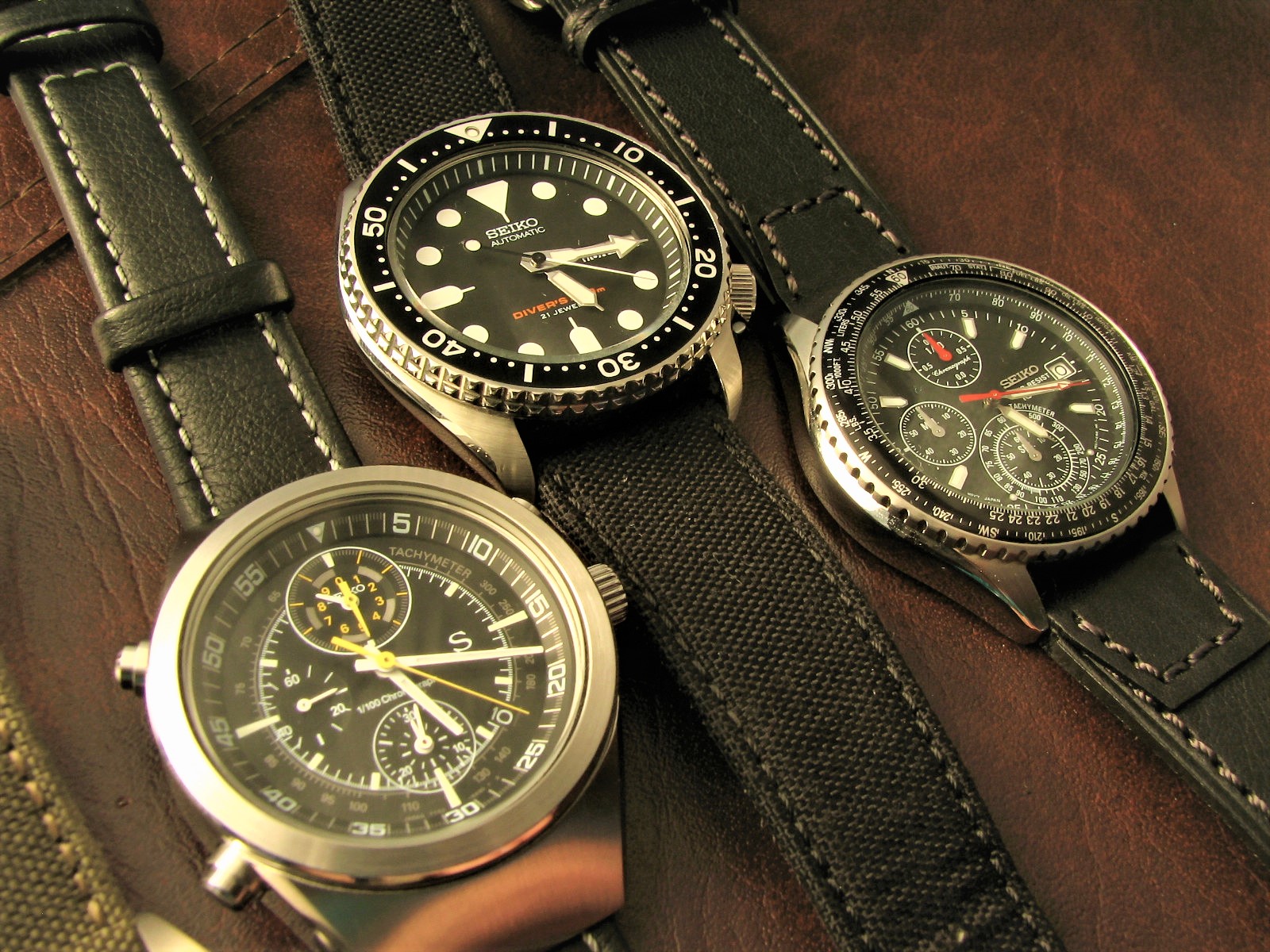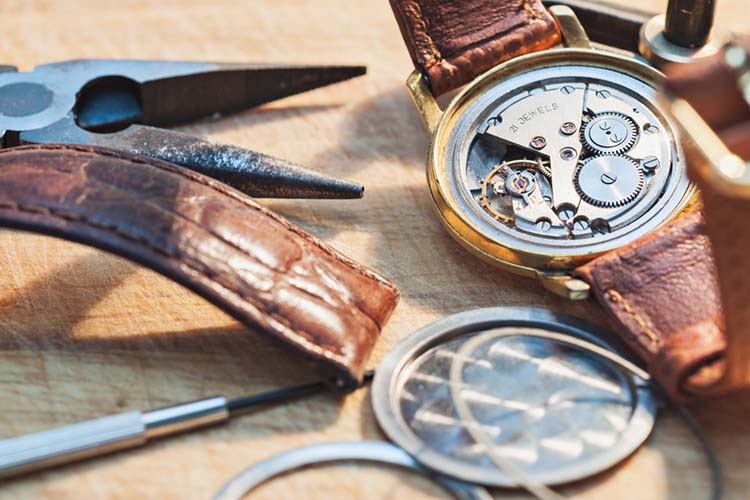When people start shopping for watches, the type of watch glass can cause a lot of confusion. One of the most common sources of confusion is sapphire because it is also used in jewel bearings in the watch movements inside the timepiece and sapphire crystal is used to cover and protect the watch dial.
The most common types of watch glass, or crystal, used to protect the face of a watch are Sapphire Crystal, Mineral Crystal, and Acrylic. The main difference between these three types of watch crystals is the level of hardness and scratch resistance that they each provide. While sapphire is considered the most scratch-resistant, it is also the most expensive of the three. We’ll cover the advantages and disadvantages of each type below.
But there’s no real connection between the sapphire jewel used inside some watches and the watch glass. Other jewels such as diamonds are also used in watchmaking although synthetic rubies are very common. They are used to prevent friction between metal watch parts.
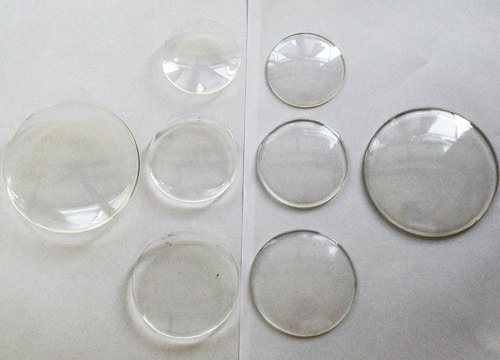
Anyway, now that we have that out of the way, just remember that sapphire crystal is referring to the glass, not the precious stone inside the watch. Click here to see some of our top picks for affordable sapphire crystal watches.
Watch glass is an important part of the watch because it protects the watch hands and dial. The glass is also an important part of making a watch water-resistant as it keeps moisture from getting inside and ruining the watch. Good quality watch glass is also scratch-resistant and shatter-proof.
In this watch glass guide, we will discuss the main differences between the most common types of watch glass used on the market today.
Table of Contents
Types of Watch Glass
Sapphire Crystal Glass
When it comes to watch glass, many watch aficionados consider sapphire crystal glass is top of the line. If a watch has sapphire crystal glass, then it has the hardest watch crystal available right now. As the name suggests, this type of watch glass is made from sapphire. However, it’s usually made from synthetic sapphire, not genuine sapphire. Sapphire is scratch-resistant and tough. It looks nice and is almost impossible to scratch (only a very hard material like a diamond can scratch it).
Aren’t sapphires blue? Yes, they are blue. But they can also be red, green, yellow, or purple. This is due to the impurities within the crystal such as copper, chromium, iron or titanium which gives it a colored hue. Pure, clear sapphire can be hard to find. This is the reason why synthetic sapphire is more commonly used.
How is sapphire crystal made? It was originally made by Auguste Verneuil, a French chemist who made glass sheets by obtaining aluminum oxide powder, superheating it, and putting it under extreme pressure. The crystal was then heat-treated to remove internal stresses that can cause weakness. The final stage of production was processing it into sheets, and that’s how synthetic sapphire glass came into being.
Although sapphire crystal offers the highest level of scratch resistance, it is still subject to cracking or shattering.
Sapphire Crystal Glass Pros
• Aesthetically pleasing
• Highest level of scratch resistance
Sapphire Crystal Glass Cons
• Expensive
• Can crack or shatter
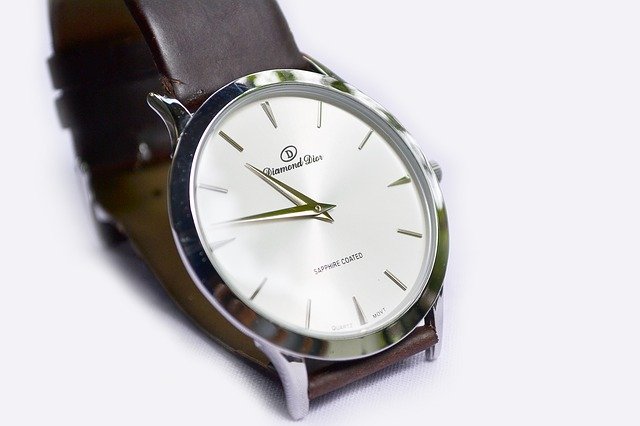
Acrylic Watch Glass
Of all the types of watch glass, acrylic watch glass is the most affordable. Acrylic is a plastic that is cheap to manufacture. It is often found on lower price point watch brands. It’s also easy to form and shape and it therefore often used to make domed watch glass. The domed effect adds a distortion effect to the watch dial, especially when viewed from the side while the watch dial when view straight on is clearly visible. Domed watch glass is popular among some vintage watches and retro-looking watches that want to mimic that look.
But it is also sometimes found on luxury watch brands like Junghans which use acrylic on some of their models. However, they tend to use the term Plexiglass instead so people don’t associate it with acrylic. Other trade names for acrylic include Acrylite, Perspex, Lucite, and Crylux.
Acrylic glass is lightweight. If you’re looking for a watch that feels light on the wrist, you can consider buying one with an acrylic watch glass. Unlike other types of watch glass, acrylic is repairable if scratched. It is often used on children’s watches because it is durable and obtaining a replacement won’t cost a lot.
Its flexibility and impact resistance, as well as the ability to repair scratches, makes acrylic a good choice for utilitarian dive and tactical watches where you want the watch to be rough, stand up to wear and tear, and one that you can easily polish out the scratches. It’s a good choice for budget-minded consumers who get a lot of practical use out of their watches.
Acrylic Watch Glass Pros
- Cheap
- Lightweight
- Soft-Easy to rub out scratches
- Relatively impact-resistant because of its flexibility.
- Easy to replace
Acrylic Watch Glass Cons
- Can look cheap
- Easily scratched
- Now always crystal clear, especially in direct sun
Mineral Crystal Glass
This is probably the most common type of watch glass you’ll find on watches. If you have a medium-price point watch, chances are, it has mineral crystal glass. It is manufactured using standard tempered glass made from silica. Mineral crystal glass is scratch-resistant and is fairly inexpensive to produce. However, it is not completely scratch-resistant (may be scratched by a hard material).
Mineral crystal is made from silica and then tempered to make it more scratch-resistant.
Mineral crystal glass can be coated with an Anti-Reflective coating (also known as AR coating or anti-glare coating). This type of coating helps eliminate reflections and increase readability under harsh lighting conditions. It can also improve the visibility of the watch’s face and make a watch look more aesthetically pleasing.
Seiko uses the term “Hardlex” for the proprietary “hardened” mineral crystal that they use in their entry-level watches.
Mineral Crystal Glass Pros
• More resistant to scratches than acrylic
• Looks better than acrylic
• Can be coated with an Anti-Reflective coating
Mineral Crystal Glass Cons
• Can still be scratched
• Harder to buff out
Conclusion
Watch glass is the transparent covering on the face of the watch. As discussed in this watch glass guide, there are three different types of watch glass – sapphire crystal, acrylic, and mineral crystal. Each material has its own pros and cons, so choose wisely.

